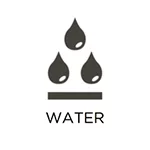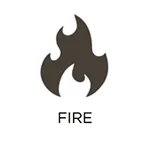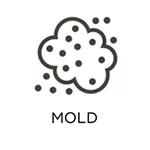RestorationMaster
Discovering flooding in your property can be disheartening. An excessive amount of water can lead to considerable damage in a very short period of time. It’s essential to reach out to a water damage restoration expert immediately as the flood water will spread through the surrounding materials which can result in structural harm and an elevated risk of mold growth.
At RestorationMaster, we provide flood cleanup services for both residential and commercial properties in Randolph, NJ. Our skilled technicians use advanced water extraction tools to eliminate standing water and ensure the affected areas are thoroughly dried. Whether you’re facing a minor water intrusion or extensive water damage, you can count on our team for efficient water removal and restoration.
Damage Caused by Indoor Flooding
Indoor flooding can be caused by intense rainfall, sewage backups, plumbing issues, and pipe bursts, each potentially causing large amounts of water to get into your property. If sewage is involved, the stakes are even higher because waste materials within the sewage can inflict permanent damage and introduce hazardous toxins that can affect your health.
Flood damage is often extensive, as water quickly saturates porous building materials and furnishings like wood, drywall, flooring, and carpets. These elements can become stained, warped, and corroded, which could jeopardize the structural soundness of the building. To limit this damage, it’s crucial to extract floodwater using the proper equipment at a controlled speed; removing it too rapidly could worsen the situation.
Mold growth is a common issue related to flooding, as mold flourishes in wet conditions. It can cause significant harm to affected materials and present health hazards by triggering allergic reactions and infections. To reduce damage and inhibit mold growth, it’s essential to swiftly contact a professional for flood damage restoration.
Randolph Flood Zones
In Randolph, NJ, flood zones and areas are categorized to indicate varying levels of flood risk. Here’s a breakdown:
- Zone A: Areas with a 1% annual chance of flooding (100-year floodplain). These are high-risk zones, where flood insurance is often required.
- Zone AE: Detailed study areas within the 100-year floodplain with base flood elevations provided.
- Zone X: Areas with a less than 0.2% annual chance of flooding (500-year floodplain). These are considered moderate to low-risk areas.
- Zone X (Shaded): Areas with a moderate risk of flooding, typically between the 100-year and 500-year floodplains.
For precise information on flood zones for specific properties, the FEMA Flood Map Service Center or the Randolph Township municipal office can provide up-to-date flood zone maps and detailed local flood information.
Professional Flood Cleanup
If your property has been impacted by flooding, get in touch with our flood cleanup experts right away. At RestorationMaster, we use state-of-the-art water extraction methods to swiftly eliminate standing water. Our flood damage restoration specialists then concentrate on drying and restoring the affected areas to their pre-flood condition. Additionally, we offer specialized services for mold removal, sewage cleanup, and biohazard material disposal if needed.
You can expect the following from our flood damage cleanup services:
- Evaluation: We will first evaluate the damage and determine the full extent of the flooding.
- Water extraction: We will remove all standing flood water using advanced water extraction equipment. Permanently damaged materials are also removed.
- Drying and dehumidification: We place dehumidification equipment throughout the impacted areas to thoroughly dry affected materials.
- Cleaning and restoration: The entire affected area will be cleaned and disinfected to restore safe conditions and we will also restore the damage caused by the flooding.
- Mold remediation: If the flooding caused mold, we can remove it with effective mold remediation.
Call Us for Flood Damage Cleanup & Restoration in Randolph, NJ
If your property has been impacted by flooding, taking immediate action is essential to reduce the damage and speed up the recovery process. Our specialists at RestorationMaster are prepared to tackle any flood situation with state-of-the-art methods to quickly extract floodwater and completely dry and restore your property.
For emergency flood cleanup in Randolph, NJ, contact us anytime at (973) 381-2313.
Related Water Damage Restoration Services
Water damage cleanup in Morristown, NJ
Water removal in Mount Olive, NJ
Water mitigation in Sparta, NJ
Water restoration in Parsippany, NJ
Water damage repair in Montville, NJ
Water damage restoration experts in Chatham, NJ
Water damage restoration team in Jefferson, NJ
Emergency water extraction in Rockaway, NJ
Water damage repair experts in Pequannock Township, NJ
Water damage services in Roxbury Township, NJ
Related Water Damage Restoration Information
Who’s Responsible for Water Damage: Tenants or Landlords?
Determining who’s responsible for water damage in rental properties can vary based on what caused the damage and what’s stated in the lease. Typically, landlords are in charge of keeping the property’s structure sound, including plumbing and structural issues like leaks or burst pipes. So, if the water damage is because of something like a roof leak or faulty plumbing, it’s usually the landlord’s job to handle repairs. However, if the tenant is at fault, like not reporting a leak or damaging the property, then they might have to cover the repair costs. It’s really important for both landlords and tenants to go through their lease agreements carefully to understand who’s responsible for what when it comes to water damage and maintenance.
The Dangers of Stagnant Water & How to Remove it?
Stagnant water isn’t just a nuisance—it’s a serious hazard for both health and property. It can attract pests like mosquitoes and promote the growth of mold and mildew, leading to health issues and damage to your home or building. To get rid of stagnant water effectively, you have a few options depending on how much water you’re dealing with. For small amounts, you can use buckets or wet vacuums, but for larger areas, you might need to bring in professional-grade pumps or equipment. After getting rid of the water, it’s crucial to thoroughly dry and disinfect the area to prevent any further problems.
How to Deal with Water Damage Ceiling Bubble?
When you discover a water-damaged ceiling bubble, swift action is crucial to minimize additional damage and ensure safety. Begin by identifying and resolving the source of the leak, whether it stems from a burst pipe or a problem with the roof. Gently puncture the bubble to release the trapped water, placing a container underneath to catch any dripping. Then, meticulously clean up any remaining moisture using towels or a vacuum. Once the area is dry, assess the extent of the damage and consider seeking professional assistance to restore the ceiling to its original condition.
Frequently Asked Questions About Water Damage Repair and Cleanup
How long does it take to restore a home after water damage?
The time needed to restore a home after water damage depends on its severity. Minor incidents may take only a few hours to clean up and repair, while more extensive damage could require several days or even weeks for complete restoration.
Is water damage restoration covered by my insurance?
Your insurance policy may cover water damage restoration, but it depends on the specifics of your coverage. Generally, standard homeowners insurance covers sudden and accidental incidents such as burst pipes. To confirm coverage, check your policy or ask your insurance provider directly.
Why is water damage so expensive?
Water damage can be costly because it requires extensive repairs to both structures and belongings. It requires specialized equipment and techniques, and if not addressed promptly, it can lead to additional issues like mold growth, which further increases costs.




